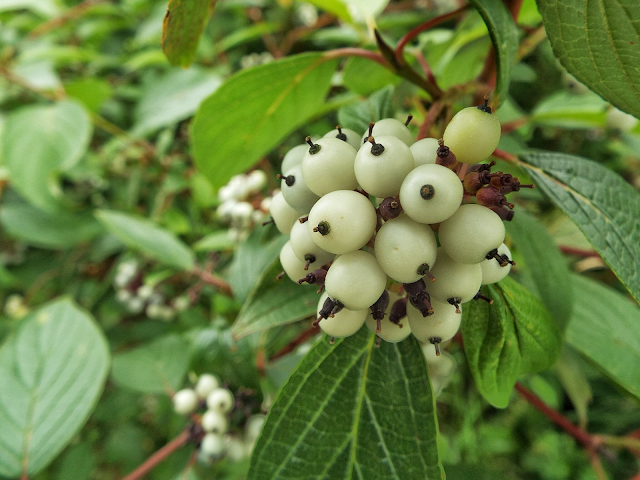"The Return of Persephone" (as in the ancient explanation for the seasons)
(credit: Frederic Leighton, via Wikimedia Commons)
Chapter 1. (continued)
Note
also here some subtleties about cultural materialist theory: a belief like “all
green grapes are sour” is an example of a nearly useless generalization. It is
a well-formed sentence in English, but it isn’t a true statement about grapes. Experience
with grapes is going to show us firsthand
that some green grapes are actually sweet, juicy, and nutritious. And none of them are deadly poisonous.
On
the other hand, if we are members of a primitive tribe, we probably should
avoid certain kinds of berries. White berries are nearly always poisonous, as
are yellow ones. The general rule, “all white berries are poisonous” may not be
universally true, but it’s near enough to always being true that our forbears
were best off obeying the rule and avoiding white berries.
Note
also how a moré’s value is seen by a tribe as being directly proportional to first,
its range of applicability (i.e., the more different contexts it applies to) and
second, its usefulness in contexts that are crucial to the tribe’s survival
(hunting, gathering, curing illnesses, etc.). Lore about berries matters more
than lore about stars. “Snakes are deadly” isn’t always true, but many snakes are
so dangerous that pre-historic tribes were best off avoiding snakes altogether.
Over
generations, we also come to value statements like “snakes are deadly” more
than ones like “the stars in the bear constellation are getting dimmer”. Whether
we watch dimming stars or not likely will have little effect on our survival
odds. Whether or not we get bitten by a snake very likely will.
Thus,
the first big principle we get from social science also tells us that morés and
customs which most improve the survival probabilities for a tribe are likely to
be very generally applicable ones that arise in response to the most general
traits of physical reality. “Don’t eat white berries” is generally a good rule to follow all over the world, as is “Avoid snakes”. In most parts of the world, there are berries.
This
brings us to the second big principle we learn from social science. It tells us
that the most profound morés and customs improve
the odds of survival for a tribe only when they are practiced over generations
by the whole tribe. Harris showed this was the case for the sacred cows in
India. Such morés may not help the survival of all individual tribe members in
the short term. What they do is create better survival odds for the whole tribe
and its culture over generations when the whole tribe observes those morés devoutly.
Treating cows as sacred beings whose slaughter is forbidden does not seem
logical when one is starving, but in the long haul, it is. The hard truth for its adherents is
that it is a moré that takes a long time to pay dividends. But eventually, it
does pay off.
Note further how such widely applicable mores sometimes become surrounded in the tribe’s lore by myths that defy further explanation or that are explained in the tribe’s lore as having been decreed by gods. A tribe might be able to explain the logic of putting a small fish into the ground with each corn seed they plant, in terms consistent with their science, but the same tribe may use myths to explain why the seasons change, and why we put away food for the winter. If one lives in temperate latitudes, winter always comes.
From
social science, then, we learn: first, that morés and their attached customs
become established if they improve the survival odds of the tribe that adheres
to them; second, tribes value most highly those morés that guide tribal life in
matters crucial to long term survival. Third, tribes tend to create myths to
explain morés/customs which their science can’t explain.
Poisonous white berries (dogwood)
(credit: David Whelan, via Wikimedia Commons)


No comments:
Post a Comment
What are your thoughts now? Comment and I will reply. I promise.